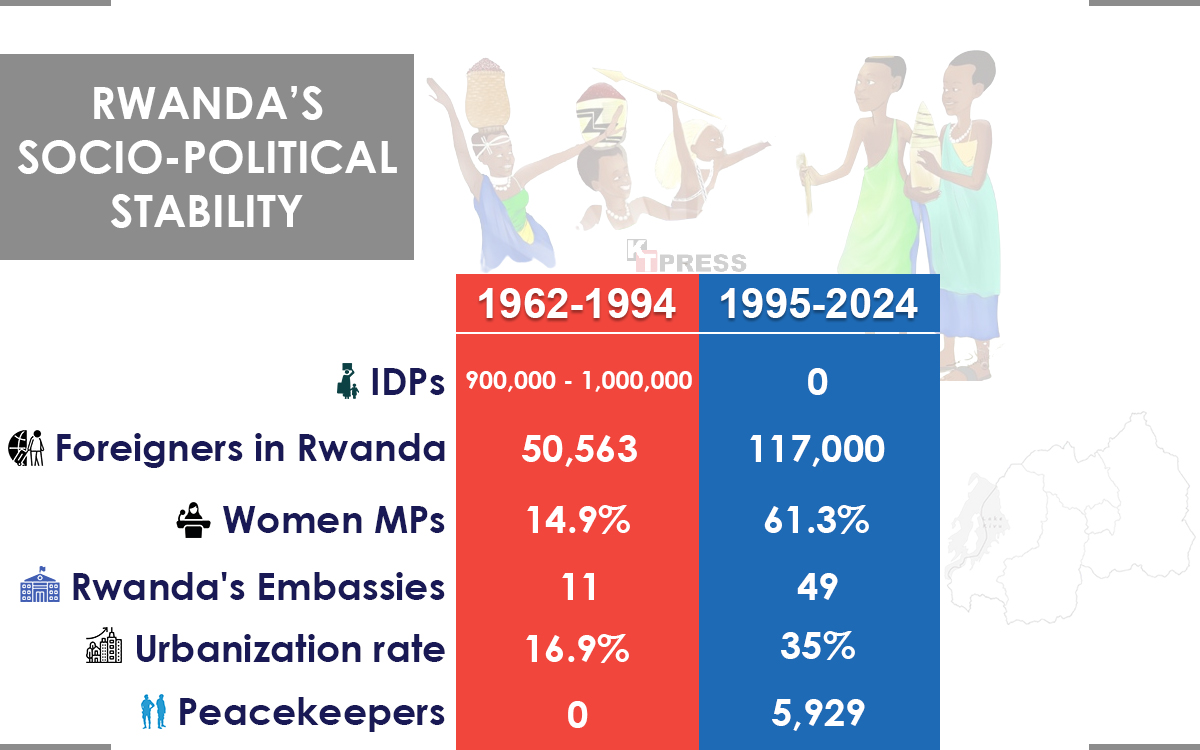
On April 8, 1993, UN special rapporteur Bacre Waly Ndiaye arrived in Rwanda to investigate the worsening political, security and humanitarian situation. He visited several camps for internally displaced persons (IDPs) spread in different parts of the country.
In a report, following his week-long trip, Ndiaye wrote that the camps were home to between 900,000 and a million Rwandans. However, the UN official noted that two months earlier in February, the number of IDPs was about 350,000. In other words, within a spate of a few weeks, those who had been forced out of their homes into camps, had more than doubled.
The Rwanda Patriotic Front/Army rebels were battling government of President Juvenal Habyarimana.
“The displaced persons, among them a high proportion of children, live a precarious life of hardship in overcrowded makeshift camps and depend on massive external food aid (13 tonnes a month) for their survival,” wrote the UN official.
“…cases of severe malnutrition have already been identified among children under the age of five. The deplorably unhygienic conditions in which they live have also caused epidemics of dysentery.”
The UN special rapporteur warned of severe food shortage, noting that the “next harvest could be down by 40 per cent as a result of the exodus from the fertile lands situated in the combat areas.”
“The question of the displaced persons is nothing short of a time-bomb with potentially tragic consequences if it is not resolved quickly principally by a return to peace and the arrest of the instigators of the massacres.”
Such was the dire situation in Rwanda at the time.
In this second series of our Data Project, we show you Rwanda’s socio-political situation in rare data. We pinpointed the most significant in the infography, as a test of what Rwanda looked like from independence in 1962 to 1994, compared to what it has been since then to date 2024.
With all those displaced, another catastrophe erupted; the 1994 genocide against the Tutsi. Within the IDP camps, some of the displaced civilians mixed with the notorious interahamwe militia who had participated in the mass killings. Our previous stories feature testimonies from Genocide survivors who recount the hardships they endured during this dark period.
Despite the chaos and violence, the Rwanda Patriotic Army rebels continued their fight against the genocidal government. Their determination paid off. The genocide was halted. On July 19, 1994, a new government of national unity emerged.
Eight months later, all displaced had gone back to their homes, and government closed the last IDP camp in April 1995, according to United Nations Rwanda Emergency Office in Kigali (UNREO) report of July 5, 1995.
Suddenly, the camps were gone. But then, in 1998, a deadly insurgency erupted in western and northwest region, orchestrated by former government, troops and civilian militias (interahamwe), – who of whom sought to forcefully return to power.
Thousands were again displaced. However, by early 2000, the situation had returned to normal. Everyone went back to their homes.
Since then, save for minor displacements that occur, in pockets of the country, especially during the heavy rainy season, which last a few weeks, there hasn’t been lengthy displacement in Rwanda for quite sometime. As of May 2024, there are no people recorded as internally displaced persons by local or international aid agencies.
While the absence of displacement is a significant accomplishment,Rwanda’s socio-political progress extends far beyond this single metric.Let’s delve into the data:
From Crisis to Stability
The numbers of foreigners in Rwanda has more than doubled, in addition to more than 130,000 refugees from neighbouring countries – reflecting a safe nation open for collaboration.
Women Lead the Way
Rwanda is a champion of women’s empowerment. In 1993, women held a mere 14.9% of parliamentary seats. Today, they’re a dominant force, occupying over 61% – among highest globally. This dramatic shift highlights Rwanda’s commitment to gender equality.
Global Presence
Rwanda’s diplomatic footprint has exploded. With only 11 embassies in 1988, its global influence was limited. Today, a network of 49 embassies positions Rwanda as an active player on the world stage. Simply put, more than one embassy is opened every year for past three decades.
Urbanization Fuels Growth
In 1992, a mere 16.9% of the population resided in cities. Fast forward to 2022, and this figure has doubled, reaching 35%. In specific regions like Rubavu, Musanze, and Huye, the urbanization rate soars even higher, surpassing 50%. This shift signifies Rwanda’s transition toward a modern, service-oriented economy, brimming with fresh opportunities.
The government has set an ambitious target: by 2050, over 70% of Rwandans should live in cities. To achieve this, a comprehensive land use and development master-plan is already in motion. It guides growth from the bustling City of Kigali to secondary cities, district centers, and urban areas. Notably, today, anyone can purchase a plot of land anywhere in the country by consulting the Geographic Information System (GIS) to determine the type of city settlement demarcated in that location.
From Fragile to Force
Prior to 1994, the absence of peacekeepers mirrored Rwanda’s turmoil. Fast forward to today, and the landscape has transformed. A total of 5,929 peacekeepers now stand as a testament to Rwanda’s commitment to global peace and stability. These troops contribute significantly to international peacekeeping efforts and play a vital role in maintaining regional security. Notably, Rwanda’s peacekeeping forces have evolved beyond mere military presence. Alongside their duties, they provide essential medical services and engage in social activities within the mission areas. Furthermore, Rwanda has taken a leadership role in shaping peacekeeping practices. In May 2015, the country introduced The Kigali Principles on the Protection of Civilians.
The Stats Speak Volumes
These statistics aren’t just numbers; they paint a picture of resilience, reconstruction, and national pride. As Rwandans head to the polls, these statistics serve as a powerful reminder of the progress achieved.
Again, we say, sit back and enjoy the more reads to come.

